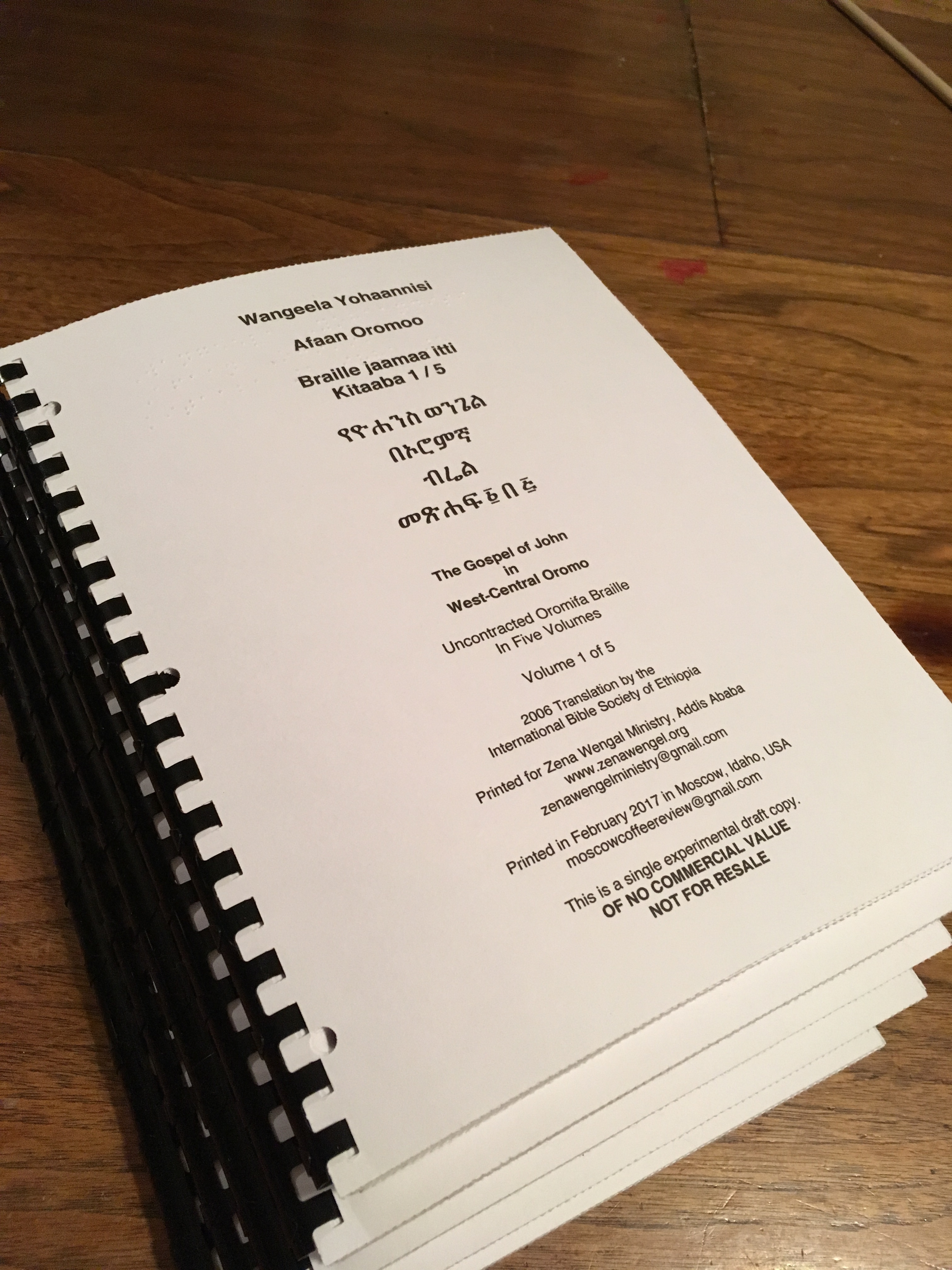Time was running out. My friend Tafesse is leaving for Ethiopia in just a few weeks, to live in Sebeta and help support the work there. He wasn’t coming back for six months so if I was going to get anything useful done, it would have to be soon. I decided to grit my teeth and just work from the PDF copy.
I began by pasting all the text straight from the PDF into Word. Then I used selective formatting find and replace to remove all the footnotes and inline annotation marks. I also “read” through the entire thing and cleaned up spots where the text flow had gotten mangled during paste, removed other extraneous formatting, such as navigation headings and page numbers. I now had a very messy plain text copy. From there, I wrote a script to massage and format the text for the brailler. I wrote it in PHP since that is what I use everyday in my job now, though I still miss C#. The script reads everything in, eliminates word-splitting hyphens that occurred on line breaks, converts capital letters to ascii braille format (comma prefix style), and makes numerous other punctuation substitutions and spacing corrections. It then wraps the entire text to 29 cell width, then pads it with 4 cells of space on the left of each line. Finally, it loops through the text and extracts inline verse numbers and places them in the left margin space in the appropriate line.
The Gospel of John ended up being 4311 lines in this format, each exactly 33 characters long plus a carriage return, 25 lines per page. A few of the finer points about the braille format for the Oromo were graciously answered by David at Duxbury Systems, maker of braille transcribing software, even though I’m not actually a paying customer (yet).
I began printing my first draft on my old hand-me-down Freedom Scientific “Braille Blazer”. It looked beautiful(!) – for about 10 pages. Then the brailler choked on me and began skipping dots. Some of them were very faint. It would occasionally make a screeching sound. Then it would insert random page advances for no apparent reason. Everything was going wrong. Fortunately, pushing through this sort of thing is maybe the only thing I’m decently skilled at. After numerous trial and error runs, I discovered that anything else but a very strict stream of data would make the old embosser wig out and cause any number of unpredictable and page-ruining behaviors. I also found that if ran for more than about 2 minutes straight, it would begin to skip. Tearing it apart and blowing compressed air on everything seemed to help as bit, as did banging on it hard, but in the end, I found the device could just not be trusted to print more than one single page at a time, which an equal amount of rest between pages. Oh, and you absolutely HAD to clear it’s memory buffer inbetween each page using a special three-finger key combination on the control pad. BUT, if you did all that right, and prayed, it would produce a nice page of braille. And so that’s what I did all week long whenever I had a spare minute, I’d get it banging away on another page, then tear it off, make sure it wasn’t hosed, remove the tractor edges, and start it up again.
IMG 1912 from Matt Jepsen on Vimeo.
As it neared completion, I began working on the cover page. This was a lot of fun. I wrote it in Oromo, Amharic, and English, on pages pre-embossed in Oromo braille. I even got to put the Oromo dictionary I bought in Ethiopia to good use.
170 single-side pages is pretty thick! In the end I divided it into 5 volumes held together with plastic comb binding. My wife helped me put the finishing touches on it tonight.
So it’s done! Praise God. The Gospel of John in braille, in the Oromo language – the first copy to ever exist. I’m excited to hear how it’s received by the fellowship of blind Christians in Sebeta, many of whom are literate in braille.
I just finished reading Lamin Sanneh’s most important work, ‘Translating the Message’. It’s inspired me to keep going when this project got rough.




